 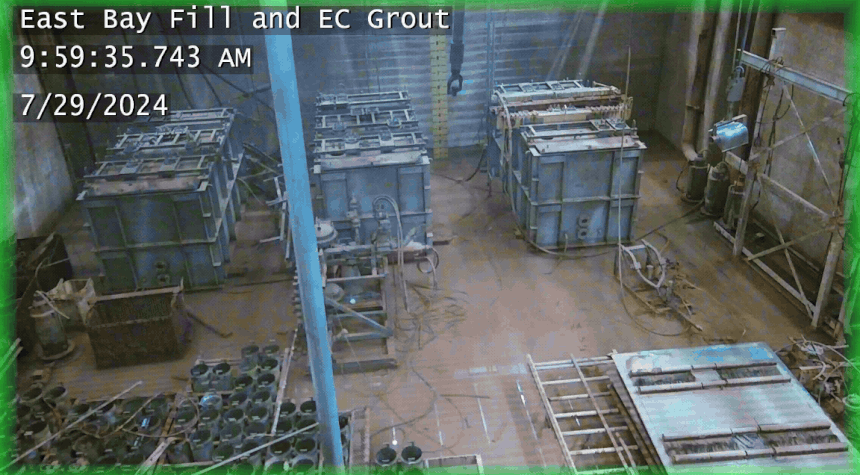 This series of photos shows the grouting of the K West Reactor spent fuel storage basin. Workers removed nearly 1 million gallons of contaminated water before filling the 16-foot-deep basin with about 6,500 cubic yards of grout — enough to fill two Olympic-size swimming pools.
RICHLAND, Wash. — Workers at the Hanford Site recently finished filling the last large concrete basin at the K Reactor Area with cement-like grout. The basin stored reactor fuel rods from the plutonium production mission.
Crews with U.S. Department of Energy Office of Environmental Management (EM) contractor Central Plateau Cleanup Company (CPCCo) placed about 6,500 cubic yards of the grout in the K West Reactor Basin. That’s enough to fill two Olympic-size swimming pools.
Crews started placing grout after pumping out contaminated water from the 1.2-million-gallon basin in July. The grout surrounds contaminated debris left in the basin and stabilizes it for future demolition.
 A worker monitors the installation of grout in Hanford’s K West Reactor Basin. The grout stabilizes the basin for future demolition and disposal.
“Our Hanford team continues to safely and efficiently complete projects that reduce risks to groundwater and the Columbia River as the cleanup mission progresses,” said Andy Wiborg, EM’s acting deputy assistant manager for River and Plateau cleanup.
The basin measures 125 feet by 67 feet. It contained 16 feet of water to provide radiation shielding for workers.
Crews filled the basin in three layers. The first foot covered contaminated debris on the floor. The second layer is 14 feet of controlled density fill, which is less dense than concrete. Workers placed a 9-inch layer of grout on top to complete the work.
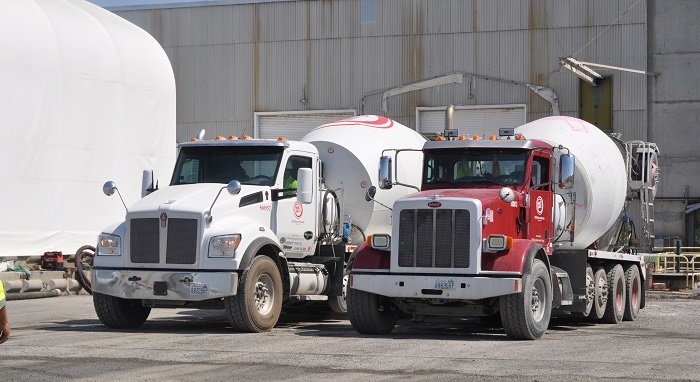 Trucks deliver grout to the K West Reactor spent fuel storage basin at the Hanford Site. In all, it took about 750 truckloads to complete grouting.
Drivers delivered about 750 truckloads of grout during the project. To shorten the time it took to go back and forth between deliveries, CPCCo built a grout plant nearby to reduce costs and improve efficiency.
“Finishing grouting of the basin is a critical step in our mission to clean up the K Reactor Area,” said CPCCo Project Manager Mike Kruzic. “I’m proud of our team’s focus and commitment to safety throughout this complex project.”

Unique system saves millions of dollars compared to traditional technologies that are not as sustainable, passive or cost effective
AIKEN, S.C. — U.S. Department of Energy Office of Environmental Management (EM) team members injected more than 100 million gallons of artesian well water to clean up shallow groundwater underneath a 33-acre former coal storage yard and associated runoff basin at the Savannah River Site (SRS).
That volume of injected well water from deep underground is nine times more water than the amount contained in the Georgia Aquarium in Atlanta, according to Ashley Shull, senior scientist for EM contractor Savannah River Nuclear Solutions (SRNS).
Over 60 years of power plant operation, which generated acidic materials and metals associated with coal, impacted the groundwater in the site’s D Area. The coal-powered plant, which began operations in 1952, produced electricity for D Area and other parts of SRS until 2012. Even though the coal was removed in 2012 and 2013, decades of rainwater passing through the coal on the ground left the soils underneath acidic. Metals leached from the coal and natural soil minerals, causing shallow groundwater contamination. It is common in the United States for contamination such as this to exist where coal was used for power production.
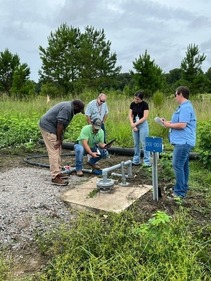 |
|
The D Area Groundwater Treatability Study project team assesses artesian flow into an injection well at the Savannah River Site. |
SRNS developed a unique solution, taking advantage of the existing conditions of the groundwater and the natural flow of two nearby artesian wells, offering a groundwater remedy without electricity or pumps.
The unique groundwater remediation system saves millions of dollars compared to traditional technologies that are not as sustainable, passive or cost effective.
“This system passively ensures a neutral buffering to groundwater to help correct the currently overly acidic conditions in groundwater caused by the decades of storage of coal in the area,” said Shull.
 This graphic shows the Savannah River Site D Area Treatability Study injection wells, reactive structure and projected water table elevation.
Working with regulators from the South Carolina Department of Environmental Services, formerly the South Carolina Department of Health and Environmental Control, and the U.S. Environmental Protection Agency, SRNS began injecting the artesian well water to neutralize the groundwater in March 2022.
While this passive technology project is adjusting the balance of the groundwater below the coal storage and runoff basin areas, it will take time to see the groundwater restored to pristine conditions. SRS tracks the cleanup regularly by monitoring the groundwater surrounding the treatment system.
“Tapping into the natural benefits, artesian well water equipped our team with a sustainable alternative to address groundwater quality to levels that will enhance the environment,” said Mike Budney, manager of the DOE-Savannah River Operations Office. “DOE and SRS have a longstanding approach to remediation that identifies opportunities to craft solutions to lower costs through less labor- and equipment-centered methods, opting for passive technology when practicable.”
Rasheed Muwwakkil, SRNS senior project engineer, added, “I would like to thank the team for all their hard work and constant communication with the DOE and regulators to gain the support needed to help SRNS reach this major milestone in groundwater remediation. This is truly a great and historic accomplishment to be proud of.”
-Contributor: Fallan Flatow


WASHINGTON, D.C. — The U.S. Department of Energy Office of Environmental Management (EM) has named Carrie Meyer as its director of communications and stakeholder engagement, overseeing a newly integrated office that serves to build transparency and foster constructive dialogue and collaboration with the people of EM, including the workforce, congressional representatives, state and local elected leaders, tribal and pueblo representatives, community leaders and media members.
Meyer has served as director of EM’s Office of Communications and Office of Intergovernmental and Stakeholder Programs in an acting capacity since earlier this year. As the cleanup program's executive leading communications and stakeholder engagement, Meyer plays a critical role in delivering the EM mission, and understands the value of proactive public engagement in achieving alignment on shared cleanup priorities.
An EM team member for over 17 years, Meyer has extensive experience in the field at Hanford, the nation’s largest environmental remediation site. She brings 30 years of experience in communications, policy development, marketing, and public affairs in the government and commercial sectors involved in engineering, construction, environmental remediation and nuclear power.
Before becoming communications director for the Hanford Site, Meyer served as the acting director for public affairs for the National Nuclear Security Administration. She has also completed a variety of assignments supporting leadership in EM and the broader DOE, focusing on communications, congressional interactions, tribal engagement, and policy development and implementation.
|
 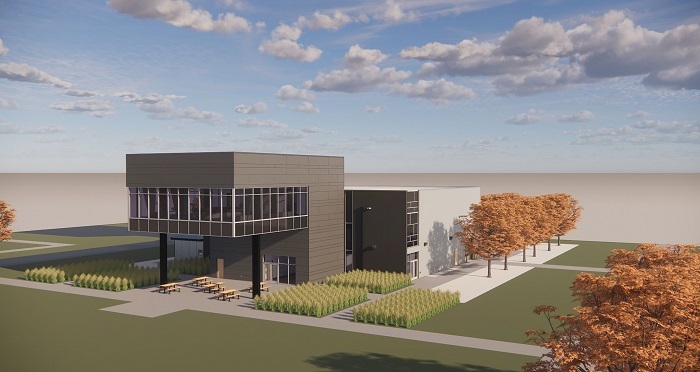 A rendering of the K-25 Viewing Platform. It is scheduled to open to the public next summer.
OAK RIDGE, Tenn. — When crews with Oak Ridge Office of Environmental Management (OREM) and cleanup contractor UCOR finished demolishing the mile-long K-25 Building more than a decade ago, they left behind a massive 44-acre footprint that’s now part of the Manhattan Project National Historical Park.
With the addition of the K-25 Viewing Platform, now underway, visitors will be able to learn more about the former uranium enrichment facility that helped end World War II while viewing the area from a new perspective.
Construction crews are making significant progress on the project. When complete, the elevated viewing platform will provide a sweeping, panoramic view of the K-25 footprint through 10-foot-tall wraparound glass windows.
Plans also involve installing visual indicators at each corner of the footprint, delineating the height and dimensions of the structure that once stood there to help visitors understand its immensity.
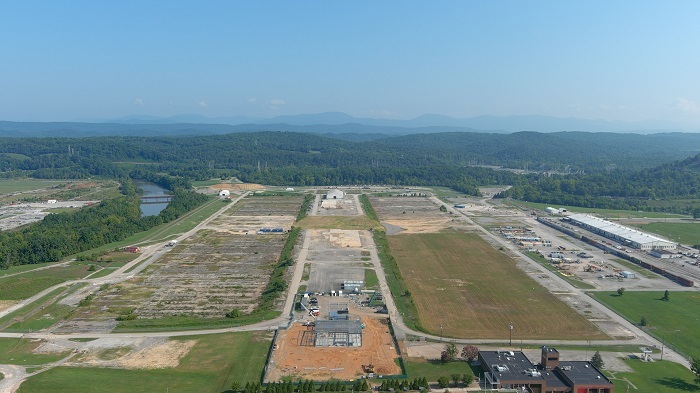 The K-25 Viewing Platform will provide an elevated and panoramic view of the former K-25 Building’s 44-acre footprint.
“The K-25 Viewing Platform will provide engaging displays that help visitors see and comprehend the full scale and magnitude of the former Manhattan Project and Cold War-era site,” said Steve Cooke, OREM’s project manager overseeing historic preservation. “This understanding will lead to a deeper appreciation of what previous generations accomplished here.”
Through an interagency agreement signed in 2022, OREM provided funding for the project, while the U.S. Army Corps of Engineers (USACE) oversees construction. USACE awarded Geiger Brothers a $9.9 million contract to build the platform last year.
UCOR and subcontractor Smee + Busby Architects designed the platform. They also provide engineering support during construction.
The facility is taking shape with Geiger Brothers finishing the concrete slab and erecting the structural steel framework. Construction is expected to be complete next spring, and the platform is set to open in summer 2025 after exhibits are installed inside.
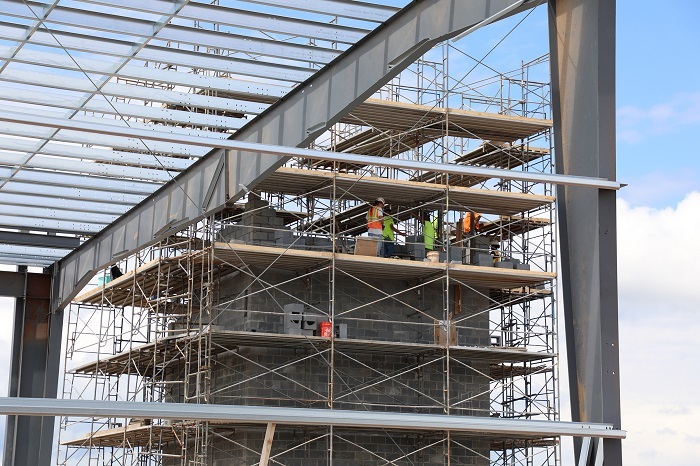 The K-25 Viewing Platform is taking shape with construction crews from Geiger Brothers finishing the concrete slab and erecting the structural steel framework. Construction is expected to be complete next spring.
Its construction is one of the final components of a multi-project agreement OREM signed in 2012 to commemorate the history of the former Oak Ridge Gaseous Diffusion Plant, where the K-25 Building was located. OREM completed the other elements in previous years, including constructing the K-25 History Center and preserving the historic Alexander Inn.
Built in 1944, the K-25 Building was the largest structure in the world at the time. It carried an equally immense, important mission to help end a global war by producing uranium for the world’s first nuclear weapon. Despite the vastness of the building and urgency of the work, the public would not learn of K-25’s existence in Oak Ridge until the end of World War II.
Uranium enrichment operations ceased there in 1985, and the site was permanently shut down in 1987. Afterward, the U.S. Department of Energy committed to a massive environmental cleanup to transform the site into a multiuse industrial park for the community. That effort involved tearing down five massive enrichment facilities, including K-25 and 500 other structures that supported operations at the site.
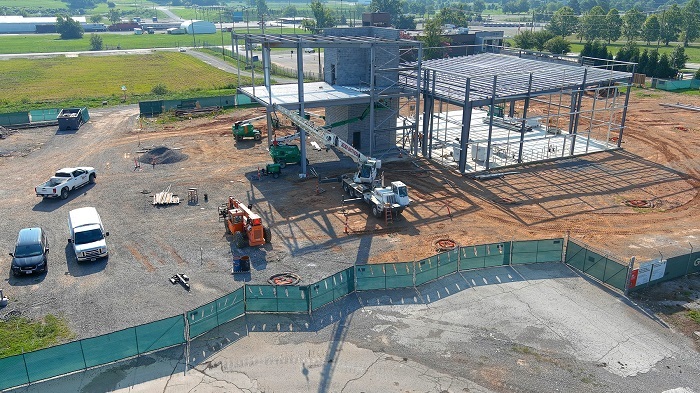 Crews are making progress on the K-25 Viewing Platform being built adjacent to the K-25 History Center, background, and overlooking the former K-25 Building footprint.
OREM and UCOR completed demolition of the K-25 Building in 2013 and all other demolition at the site in 2020. Additionally, they finished all soil remediation required on the K-25 footprint this summer.
The transformed site, now called the East Tennessee Technology Park, already has numerous private businesses onsite along with large conservation areas and a national park. The K-25 Building footprint is within the Manhattan Project National Historical Park, a unit of the National Park Service that also includes Los Alamos, New Mexico, and Hanford, Washington.
-Contributor: Wayne McKinney
 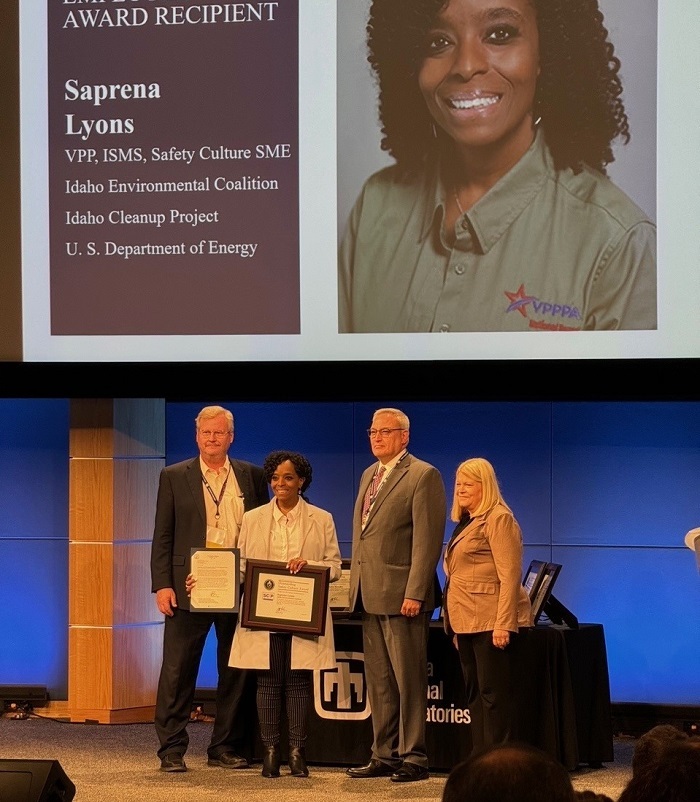 Idaho Environmental Coalition safety professional Saprena Lyons, second from left, receives the Fiscal Year 2023 Contractor Individual Outstanding Safety Culture Award this month at the U.S. Department of Energy Safety Culture Improvement Panel (SCIP) Annual Meeting and Safety Culture Workshop. Also pictured from left: SCIP co-chairs Jack Zimmerman and Todd N. Lapointe, and SCIP Executive Secretary Julie A. Goeckner.
IDAHO FALLS, Idaho — An employee of the Idaho Environmental Coalition (IEC), the U.S. Department of Energy (DOE) Office of Environmental Management (EM) contractor at the Idaho National Laboratory (INL) Site, recently received recognition for her efforts to enhance safety last year.
Saprena Lyons, a safety professional at IEC, received the Fiscal Year 2023 Contractor Individual Outstanding Safety Culture Award this month at the DOE Safety Culture Improvement Panel (SCIP) Annual Meeting and Safety Culture Workshop. Lyons manages the Voluntary Protection Program (VPP), Integrated Safety Management System (ISMS), safety culture and Human Performance Improvement at IEC.
DOE developed the Outstanding Safety Culture Awards program with SCIP objectives in mind. These objectives include a host of safety priorities, such as using safety advancements and evaluating safety continually to enhance safety culture throughout the DOE complex.
The award is meant to recognize individuals for superior or model actions over a period of one fiscal year that exemplify the desired behaviors identified in DOE’s Integrated Safety Management System Guide.
Last year, Lyons led IEC and EM’s Idaho Cleanup Project (ICP) in hosting the 2023 SCIP Workshop, where hundreds of participants gathered from across the DOE complex to discuss aspects of safety culture.
Lyons took the lead on planning workshops, securing a venue for the event and organizing speakers. The three-day workshop provided an opportunity for about 300 professionals to network and learn from the experiences of other industry professionals.
“Attendees came from many DOE sites and private organizations, which included international representation. This event may not have happened without Saprena, and all who attended benefited from the topics that were discussed,” said IEC Safety and Health Program Senior Manager Brian Perkes. “Her efforts displayed all aspects of safety culture, including leadership, employee engagement and organizational learning.”
Lyons has long been a leader in VPP, ISMS and the overall safety culture at ICP. Her knowledge and experience have helped improve ISMS and other programs at ICP. She shares her knowledge through one-on-one mentoring sessions with other safety leaders and takes a lead role in safety events.
“As the IEC safety culture leader, she meets regularly with the DOE Idaho safety culture advisor as well as with the safety culture leaders of other local DOE contractors. These meetings facilitate information-sharing, communication of leadership tools, and a venue for safety leaders at all levels of the organizations to openly share on safety culture topics,” said Richard Denning, ICP facility safety team supervisor and safety culture advisor. “These regular meetings facilitate effective partnering with other contractors, and with the DOE field office, that helps us all work to the overall goal of safe mission accomplishment.”
-Contributor: Leamarie Mitchell
 
LEXINGTON, Ky. — Watch interns in action through the U.S. Department of Energy Office of Environmental Management (EM) Portsmouth/Paducah Project Office (PPPO), and listen as they share perspectives on their experiences at EM’s Portsmouth, Paducah, and Lexington sites this summer as PPPO prepared them for the next generation workforce. The OnePPPO Internship initiative provides professional internships for students from area colleges and universities, including minority serving institutions. The initiative helps attract potential employees, increase productivity and reinvigorate the PPPO organization with fresh viewpoints and specialized skillsets. Click here for a full story on the OnePPPO Internship initiative from the Aug. 13 EM Update.
 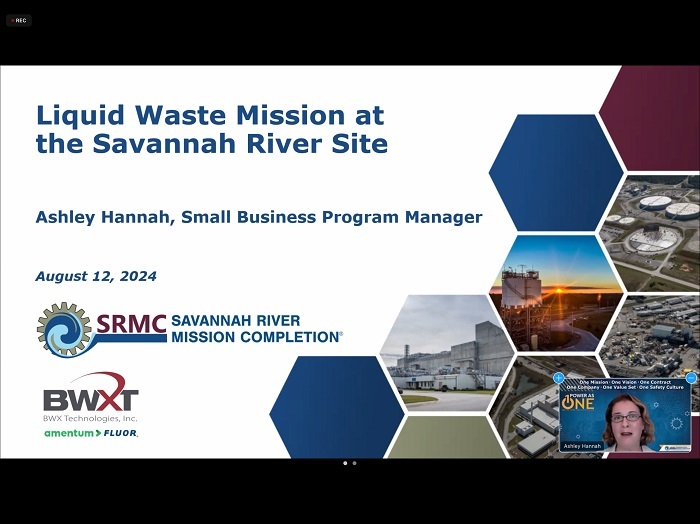 Savannah River Mission Completion Small Business Program Manager Ashley Hannah conducted a special small business workshop for local black-owned businesses around Savannah River Site via a live video conference.
AIKEN, S.C. — A U.S. Department of Energy Office of Environmental Management contractor at the Savannah River Site (SRS) held a special small business workshop for local black-owned businesses around SRS.
August is recognized as National Black Business Month and Savannah River Mission Completion (SRMC), the SRS liquid waste contractor, partnered with the local Greater Augusta Black Chamber of Commerce (GABC) in Georgia to inform local black-owned small businesses about existing and upcoming business opportunities at SRS.
SRMC is a GABC member and offered to conduct the workshop for chamber members who want to work with SRMC. Recognizing that becoming a vendor at SRS can be daunting for some small businesses, SRMC is helping small businesses navigate the procurement process.

The workshop also provided information about the DOE Mentor-Protégé Program. That program increases participation and maximizes opportunities for small businesses to work with the Department, and SRMC supports and participates in the program. Other topics discussed included upcoming opportunities for materials, services and construction, and strategic agreements.
SRMC Small Business Program Manager Ashley Hannah presented the information via a live video conference. Hannah said as a part of its community commitment, SRMC is committed to subcontracting at least 50% of all purchases to small business.
“SRMC has a small-business-first approach to subcontracting,” Hannah said. “Since contract inception in 2022, nearly $400 million has been awarded to small business suppliers supporting all SRMC facilities and missions. Anticipated small business procurements include pumps, concrete, general construction, rental equipment, pipes and valves, and chemicals.”
She added that chamber members are encouraged to register with SRMC to become a supplier for the contractor.
GABC President Ronic West said chamber members received a wealth of helpful information during the workshop.
“SRMC offered to be a resource for our chamber members, guiding them through the process of doing business with them,” West said. “The chamber partnered with SRMC on this initiative because of our mutual interest in making chamber businesses aware of potential business opportunities that exist for them, not only as black-owned businesses, but also as local small business vendors.”
-Contributor: Dara Glass
|
  The National Cleanup Dialogue fosters constructive discussion among senior leaders from the U.S. Department of Energy Office of Environmental Management (EM), U.S. Environmental Protection Agency and state environmental agencies with equities in the EM cleanup mission to build a shared knowledge base, identify and resolve challenges and discuss emerging issues related to cleanup across the EM complex.
IDAHO FALLS, Idaho — Officials from the U.S. Department of Energy Office of Environmental Management (EM), U.S. Environmental Protection Agency (EPA) and state environmental agencies recently held the annual National Cleanup Dialogue to focus on shared responsibilities, challenges and opportunities in EM’s cleanup across the country.
“Bringing our state and federal regulatory partners together to build upon previous discussions, share lessons learned and discuss next steps for complex challenges is very important to EM as we continue to make cleanup progress,” said Joceline Nahigian, director for the EM Office of Intergovernmental and Stakeholder Programs. “This partnership fosters transparency and trust as we share a common goal to protect the public and the environment.”
 Pete Johansen, Idaho Department of Environmental Quality Federal Facility Agreement and Consent Order supervisor, shares examples of successful stakeholder engagement and tribal coordination in Idaho during the “Idaho Highlight: Stakeholder Engagement and Tribal Coordination” session. The session provided lessons learned to demonstrate how this non-technical work of coordination and consultation can support the cleanup and ongoing mission at U.S Department of Energy Office of Environmental Management sites.
The meeting featured sessions on stakeholder engagement and tribal coordination, innovations in groundwater cleanup, waste disposal and chemicals known as per- and polyfluoroalkyl substances (PFAS).
Nick Balsmeier, Idaho Cleanup Project acting deputy manager, and Kristen Ellis, EM associate principal deputy assistant secretary for regulatory and policy affairs, provided updates on cleanup activities and priorities.
Representatives from EM headquarters and field sites, EPA headquarters and regions 4,6,8 and 10, and the states of Idaho, Kentucky, Ohio, Nevada, New Mexico, South Carolina, Tennessee, Utah and Washington participated in the meeting. The state environmental agencies attended the event as part of the Environmental Council of the States Federal Facilities Forum.
The meeting provides a forum for EM, EPA and the states to:
- Work collaboratively to address common complex-wide issues;
- Improve communications among EM, EPA and states at all levels;
- Share best practices and lessons learned from around the complex; and
- Ensure the cleanup program is viewed by all parties in a complex-wide manner.
 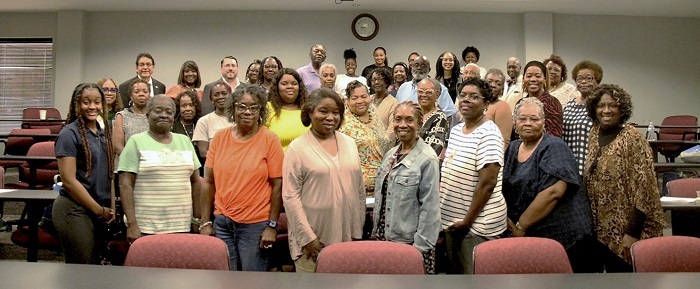 Local educators, community leaders and student interns visited the University of South Carolina Aiken for the Teaching Radiation, Energy and Technology Workshop held by the U.S. Department of Energy Savannah River Operations Office.
AIKEN, S.C. — Over 40 educators, community leaders and student interns recently visited the University of South Carolina Aiken (USC Aiken) for the Teaching Radiation, Energy and Technology (TREAT) Workshop held annually by the U.S. Department of Energy (DOE) Savannah River Operations Office for nearly 30 years.
Through an environmental justice grant, DOE partners with Savannah State University (SSU) to educate area teachers and community leaders about environmental radiation, safety, education outreach programs, job training skills, environmental monitoring and emergency preparedness.
“Our goal with this longstanding environmental justice initiative is to educate attendees on radiation, DOE missions and the benefit of having a strong relationship with SRS,” said James Tanner, DOE public accountability specialist. “Our hope is that attending educators take this information back into the classroom to inspire hundreds of students, year after year.”
Attendees were welcomed by Melinda Downing, DOE headquarters environmental justice program manager; Mike Budney, DOE-Savannah River Operations Office manager; Daniel Heimmermann, USC Aiken chancellor; and Lessie B. Price, Aiken City Council member.
“TREAT workshops are a collaboration of academia, DOE and its contractors, and regulators who come together for the purpose of education and progress. DOE is proud to be on this team,” Budney said to TREAT participants. “We are grateful for these knowledge-sharing exchanges that help open doors for career opportunities for students and future leaders.”
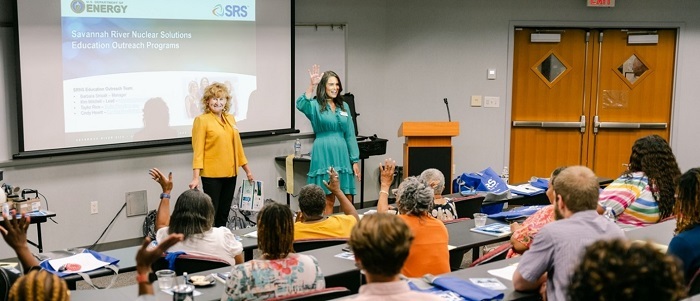 Kim Mitchell, left, and Taylor Rice with Savannah River Nuclear Solutions Education Outreach brief attendees during the Teaching Radiation, Energy and Technology Workshop.
SRS Environmental Monitoring Program Scientist Colleen Davis presented air and fish surveillance information and displayed equipment used to survey fish populations. The program is responsible for confirming compliance with applicable regulations and DOE orders as well as monitoring any effects of SRS operations on the environment.
“Presenting at the workshop allows for us to discuss environmental monitoring from the standpoint of how we measure the health of our environment and how this surveillance aids in determining dose and risk assessments to members of the surrounding community,” said Davis. "We assured the public of their safety living near the site and the absence of increased radiation exposure risks from our operations.”
Kim Mitchell, Taylor Rice and Cindy Hewitt with Savannah River Nuclear Solutions (SRNS) Education Outreach provided an overview of their programs. SRNS is a DOE Office of Environmental Management contractor at SRS.
“This was a great way for teachers to learn about all the education opportunities offered by SRNS and how SRNS Education Outreach works to meet the needs of education communities in the Central Savannah River Area and Orangeburg County,” said Rice.
In addition, experts from the South Carolina Department of Health and Environmental Control, SRS Citizens Advisory Board and Aiken City Council came together to teach, answer questions and share potential career opportunities at the event.
“Our aim is for attendees to leave this workshop having a clearer understanding of SRS missions and feel confident in our commitment to safety, community engagement and environmental stewardship,” Tanner said.
-Contributor: Mackenzie McNabb
 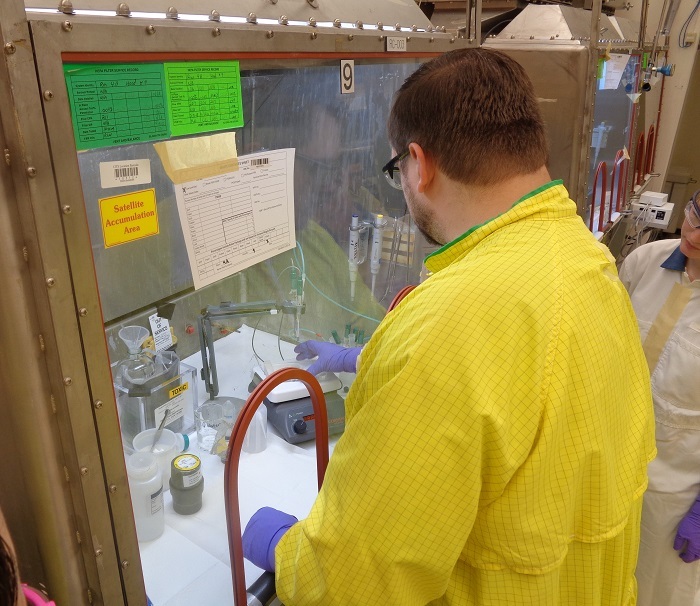 A 222-S Laboratory chemical technician tests a tank waste sample.
RICHLAND, Wash. — A One Hanford contractor partnership has developed a new process to ensure radioactive and chemical tank waste is ready for pretreatment quickly and efficiently at the Hanford Site.
U.S. Department of Energy Office of Environmental Management contractors are focusing on improving waste sample analysis and increasing efficiency of future tank waste treatment. They include Navarro-ATL, operator of the site’s 222-S Laboratory, and tank operations contractor Washington River Protection Solutions (WRPS).
In a new approach, lab workers will analyze samples from the tank waste staged to be processed in the Tank-Side Cesium Removal System (TSCR) much earlier in the process. This reduces the amount of sampling required and accelerates the process of qualifying the waste for processing through TSCR.
"This is a substantial improvement to the waste qualification process,” said Delmar Noyes, Hanford assistant manager for Tank Waste Operations. "It will significantly increase the amount of feed available and reduce cost by cutting the amount of sampling needed in half."
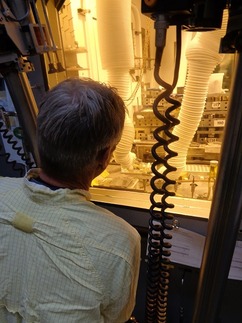 |
|
A 222-S Laboratory worker analyzes a waste sample from one of the Hanford Site’s underground waste storage tanks. |
Lab staff will analyze the chemical makeup of waste samples gathered by WRPS to determine if the waste is suitable for processing through TSCR.
Sampling waste before it is transferred to the tank that feeds TSCR will ensure that enough waste is available to be processed, and ultimately delivered to the Waste Treatment and Immobilization Plant. There, it will be immobilized in glass for safe disposal.
“In future 24/7 tank waste treatment operations, our volume is expected to quadruple to about 40,000 samples per year,” said Ray Geimer, Navarro-ATL general manager. “Anything we can do to improve efficiency and speed is critical to support tank waste treatment.”
|